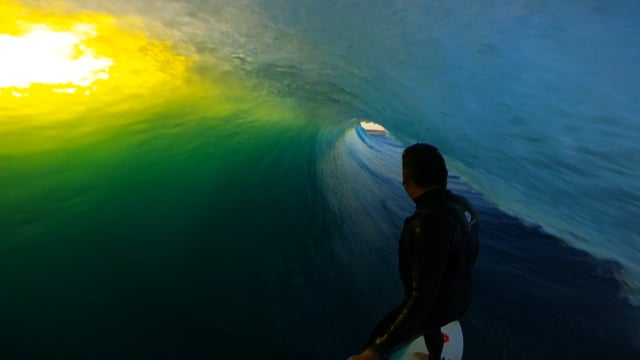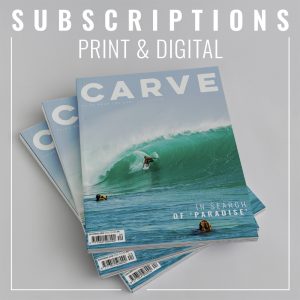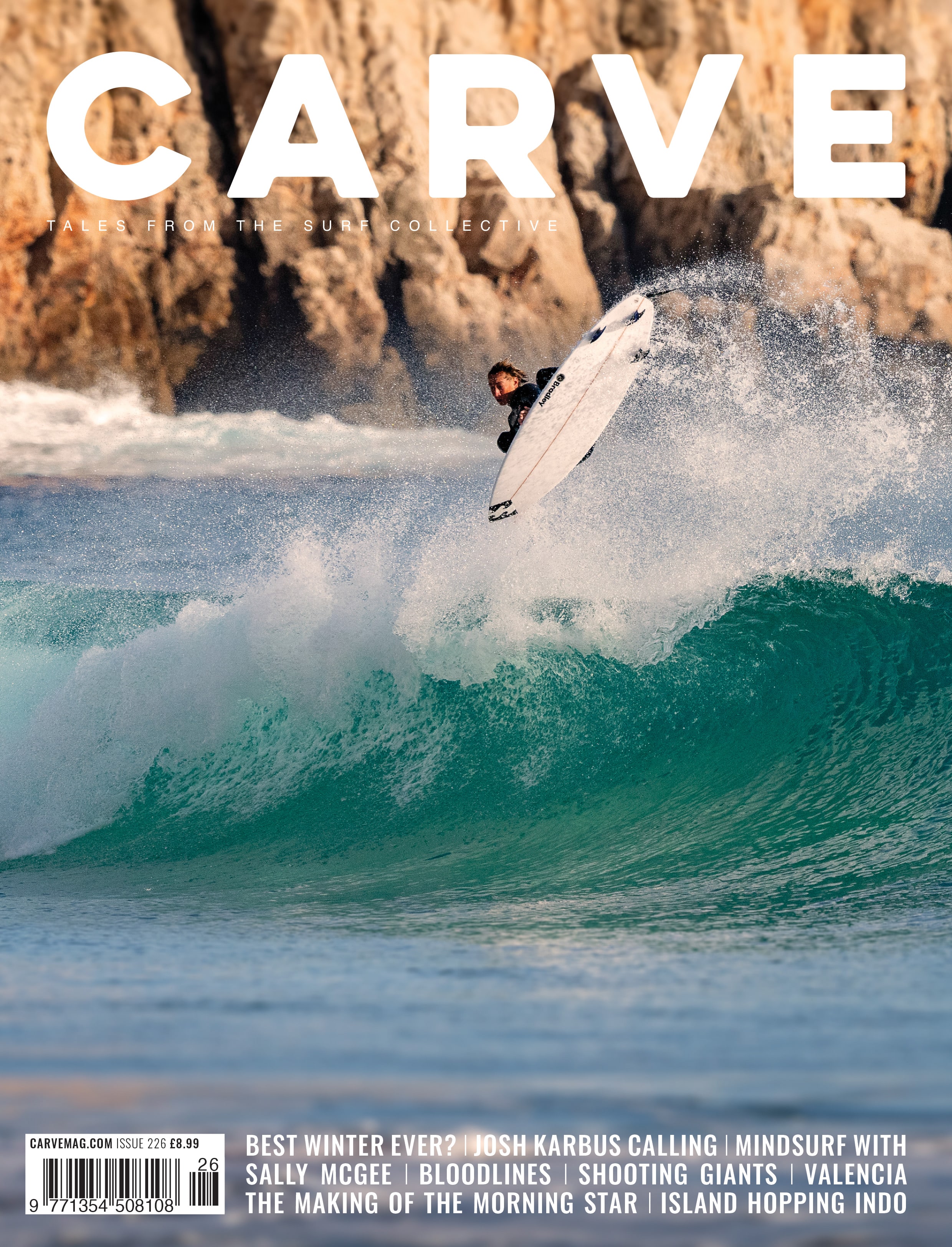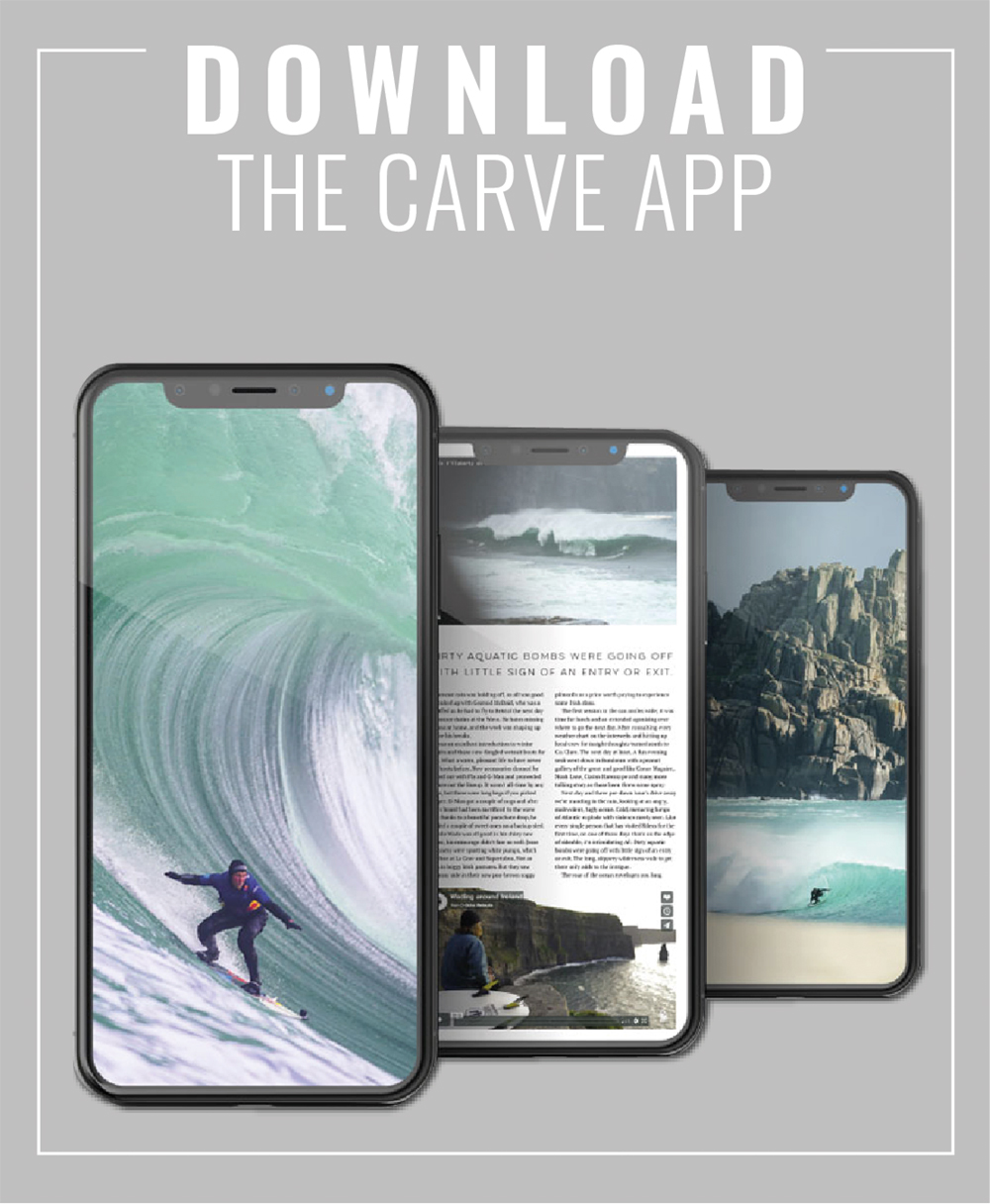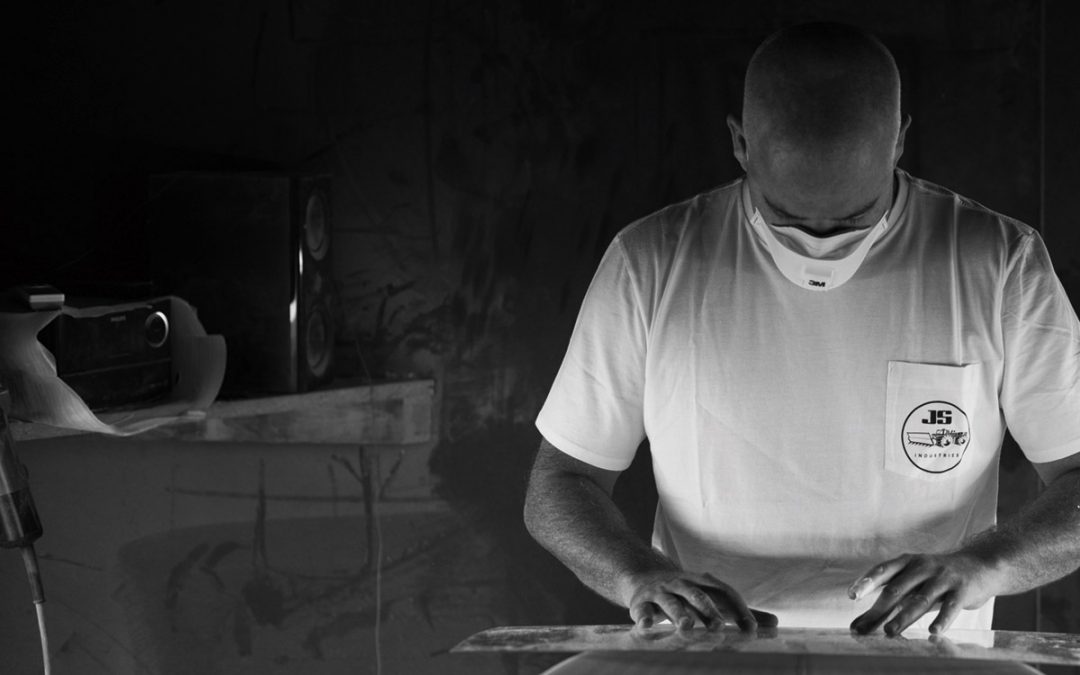
tractor man
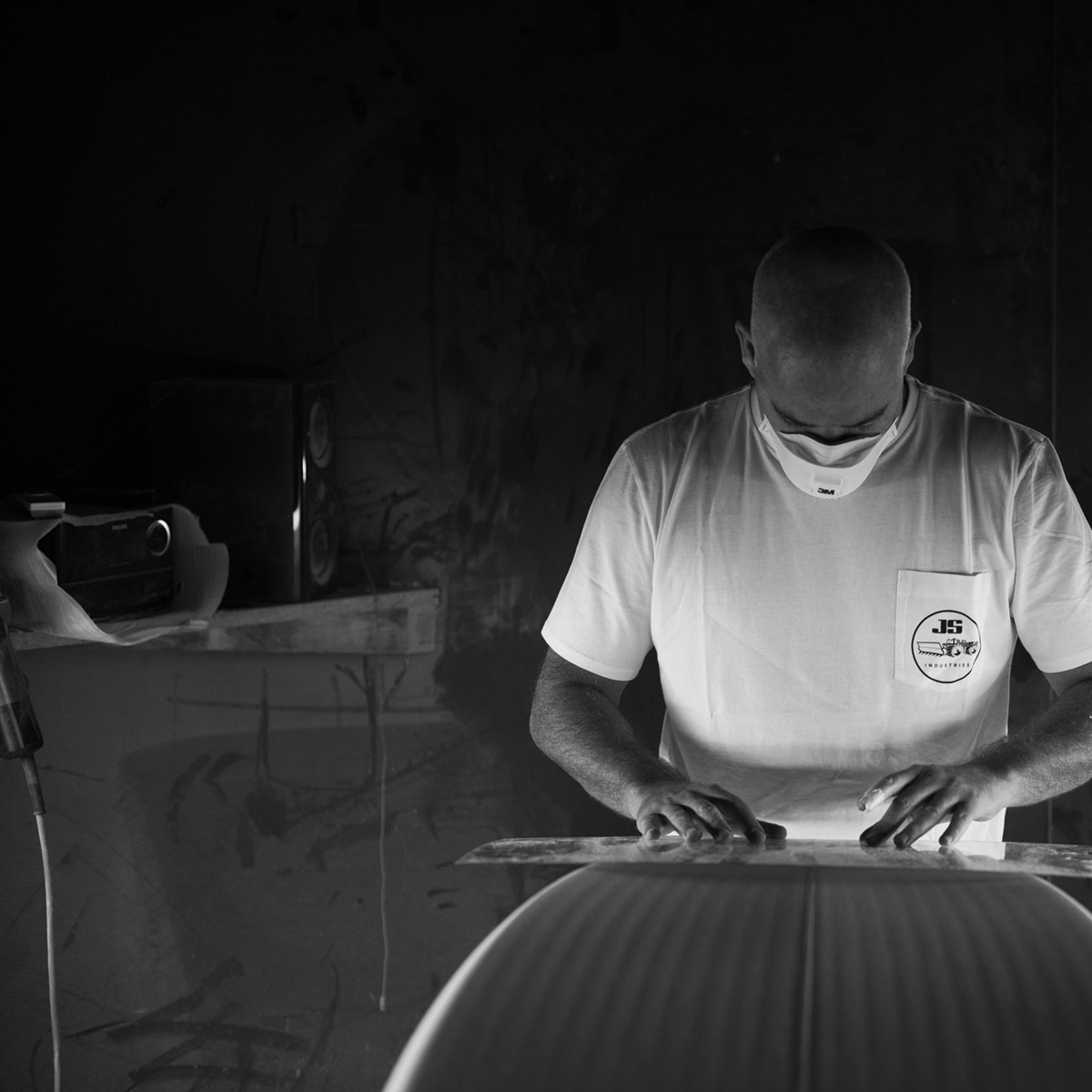
Photos courtesy of JS Industries
Jason Stevenson started from nothing, just a grom who wanted to surf. Then he realised he had to get a job, so he moved to the Gold Coast and started on the bottom rung in a surfboard factory. He is one of the world’s best shapers, with one of the top teams in the world. Trevor at Down the Line surf shop asked him to visit the UK so Steve England popped along to ask a few questions.

How long have you been shaping?
Since 1999 when was I first started JS Industries and the Tractor label. So nearly 21 years.
Has it been an easy track, or would you say or have you had ups and down like the rest of the surf industry?
I’d say nothing is easy. We have had ups and downs like everyone else, highs and lows. And global economics affect all of us, surfboards aren’t immune to that. So yeah it has been a rollercoaster ride but I don’t think its ever been hard. But I think I have been fortunate working with good surfers and working with good guys building boards. Everyone who works for me has worked with me since I set up. Matt Branson is my head laminator but the sanders and laminators have all been there since day one.
That is a sign of a good boss!
I hope so! I’ve been harsh but fair. We pride ourselves in the quality of board we build and we are recognised by the retailers as building the best boards they get. I think that’s been a real strong point that’s got us through a lot of the hardships that the surf industry faced. Also people just want to buy a surfboard even when things get tough. Even more when things get tough. You just want to get back to that happy place, and everyones wants to go surf. So we are not immune but it’s been good.
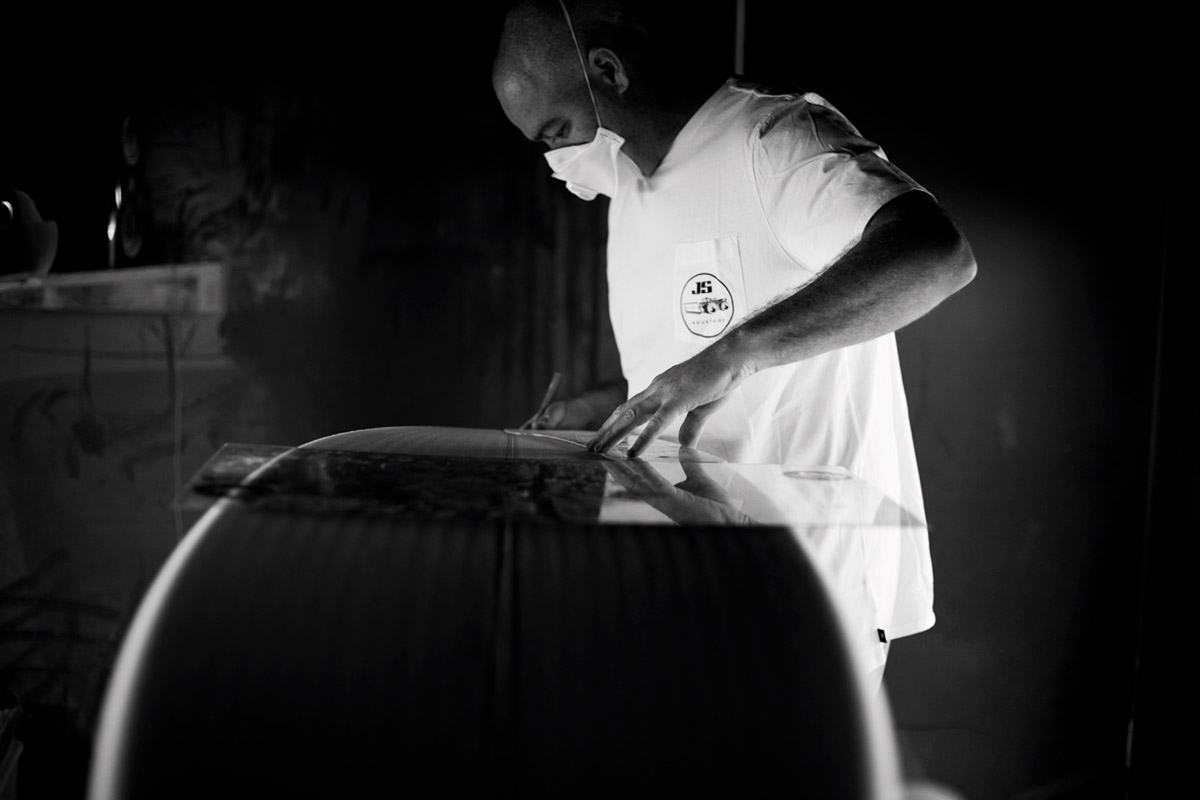
How have you found the transition from hand shaping to CAD?
I love it. Obviously I have come from that background and I was one of the first to accept and work with the software. I think Ned Hyman was one of the first but as soon as I got involved with it I loved it. I was probably one of the first owner/operator companies. I bought machines which were built locally, off Mikey ‘the German’, he built the first app machines. I was one of the first to get one and never looked back. I think even the other guys in the world now copy the top guys CAD shapes and work off them to produce even better boards. So yes I was one the first to be hands on. I jumped all over it. I think my age may have helped, but I wouldn’t say I was competely computer literate, but when it came to designing surfboards and the machine I knew it was important to have good relationship with the CAD and the machine and the output. There was one machine and now there are five, and now we are working on designing new machines. We are even making and refining our own machines. So you have got to know software, the machines, the nuts and bolts, so I’m not just shaper. I kinda of know all of it. Plus I have really good people around me who are involved in building all of this stuff.
There are so many variables in surfing, hydro dynamics, personal preferences, etc how do you go about designing and getting inspiration these days. Is it from team or F1 or science?
I think because I am a surfer myself I do a lot of the design aspect and I do all the testing. There are things in there learned from the Americas Cup I learned about like the finishes of boats and water friction and what finishes do that are relevant to surfboards. How to finish a surfboard in particular for the elite who get the most benefit of this information. But not too much else. I think it is a unique sport, it’s dealing with waves, individual surfers and styles, so there are no wrongs and rights.
Where do you see it all going?
In my own business and industry we are seeing the change in materials; the top guys are now adopting the new tech. As you know we make our own boards which are called Hyfis and other brands are doing other stuff with similar materials. This is the biggest jump in material since what has essentially been the same process since the ‘60s. We are seeing a big change in designs and the younger generation of surfers and shapers are rethinking the way surfboards should look and be built. And there is now accessibility to the new materials. We are developing boards that are lighter, stronger, faster, all these key words you hear. That is where we are heading. And it’s never going to end. It will constantly evolve.
Do you think we are in a design jump era?
Hard to say. It’s hard to step back, look and make that assumption when you are in the midst of it. And hard to see or predict where the next jump will come. I find it’s dictated, especially when you make boards at the elite level, by what the top guys think, adopt and and where they want to go. I can’t force change on them. Like with the Hyfi it was easier to get some guys to have go and adopt and ride them, than others, who may have been chasing world titles and just had this one track mind. They just wouldn’t sway or jump to new tech. Until they relax and get loose and comfortable with it then things stay that way in the general population. I designed boards and built this new technology but it was really hard to get Joel, who was going for a world title to adopt it. He just said, ‘This thing goes amazing but I’m not going to ride it.’ So that doesn’t stagnate the process but it means you are not evolving at the rate that you would want to. But you just have to keep that in mind.
Surfers aren’t real open to new tech. There was a huge resistance to change from hand shape to machine?
You still hear it today! My son Luka is coming up and learning and some guy asked if he was going to hand shape. And was like ‘No. He is not, because that is not where this is going to progress.’ Because it is not the future of surfing. What we are doing now with these wavepools is the future. We as shapers, designers and manufacturers of surfboards, this is where we will get our best feedback and fuel the biggest design jumps. The one thing we have never had is that one constant static bar, that wave that’s just repetitive. So where we will get wave pools we get opportunties to test. If you look at Texas, and see that they are doing, then you start rethinking and redesigning for ramps and airs and that kind of wave. Then you have Kellys which is a different kind of wave. You have other pools coming up. So all these pools will pop up with all the kinds of waves, but they will break consistently. So I am going to be able to do a wave pool tour and work on specific boards and designs, so this is going to evolve board designs. Bring wave pools on! Who doesn’t want a wavepool in their backyard?
Where is your favourite wave?
The best waves I’ve ever got was when I was travelling with Andy and Joel shooting “Life’s better in boardshorts” at Desert Point. Those were the best waves personally I’ve had. I went from there to Cloudbreak so between those two. Two totally different waves; Cloudbreak is big and scary, and Deserts is so perfect. If I had choice I’d go for Deserts. It’s an amazing wave. And to pull out of a wave some 600 yards down the line, just sit there looking back up and have it suck you back up to the take off! That’s amazing! It’s ridiculous that wave.
Favourite surfer to watch?
I like surfing in general. It’s like asking who is your favourite kid! I’m going to go with Joel as the most aesthetically pleasing surfer in the world to watch. Obviously it’s not that easy but his style and technique are effortless. Then you have guys like Julian with an amazing array of weaponry. Owen Wright one of the most technically gifted surfers, even though he doesn’t ride my boards any more, he’s an amazing surfer to watch. Flores in the heaviest waves in the world … Kelly, Italo, you see inspiring guys at specific breaks. I just think the world tour in general is amazing.
Olympics yes or no?
Yes. I think anything that raises the profile of the sport in a positive way is good. But. I only say this because I heard it was going to be held in a wavepool. If you go to Japan and its one to two foot, like it could well be, it won’t do it justice. But a wavepool, years down down the track, with developed technology which will make it a spectacle, then I’d say great. I’d be negative if surfing was in the Olympics and it was held in shit conditions. As long as the guys get to perform at their peak. So if they can build a good wave pool and everyone gets to put on their best show, because it is a show, and we all want to see a good show, then I’d say yes.

You can follow JS Surfboards on Instagram here

